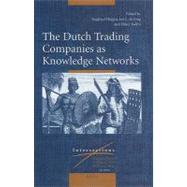
| Acknowledgements | p. ix |
| Notes on the Editors | p. xi |
| Notes on the Contributors | p. xiii |
| List of Illustrations | p. xvii |
| Introduction | p. 1 |
| The Americas | |
| Elias Herckmans. A poet at the borders of Dutch Brazil | p. 19 |
| Officers of the West India Company, their networks, and their personal memories of Dutch Brazil | p. 39 |
| The butterfly effect. Embodied cognition and perceptual knowledge in Maria Sibylla Merian's Metamorphosis insectorum Surinamensium | p. 59 |
| Picturing New Netherland and New York. Dutch-Anglo transfer of new world information | p. 103 |
| Asia | |
| Piracy and play: Two Catholic appropriations of Nieuhof's gezantschap | p. 129 |
| Knowledge transfer and cultural appropriation: Georg Everhard Rumphius's 'D'amboinsche rariteitkamer' (1705) | p. 145 |
| Antiquarian Ambonese: Francois Valentyn's comparative ethnography (1724) | p. 171 |
| Engelbert Kaempfer, Imamura Gen'emon and Arai Hakuseki. An early exchange of knowledge between Japan and the Netherlands | p. 201 |
| Witsen's Studies of Inner Eurasia | p. 211 |
| South Africa | |
| (Ex)changing knowledge and nature at the Cape of Good Hope, circa 1652-1700 | p. 243 |
| A badly harvested field: The growth of linguistic knowledge and the Dutch Cape colony until 1796 | p. 267 |
| Europe | |
| Writing history in the age of discovery, according to La Popelinière, 16th-17th centuries | p. 297 |
| The model of the VOC in early seventeenth-century France | p. 319 |
| 'Aus den furnembsten indianischen Reisebeschreibungen zusammengezogen'. Knowledge about India in Early Modern Germany | p. 337 |
| The VOC and Swedish natural history: The transmission of scientific knowledge in the eighteenth century | p. 361 |
| Unknown unknowns. Ignorance of the Indies among late seventeenth-century Scots | p. 393 |
| Colonial objects and the display of power. The curious case of the cabinet of William V and the Dutch India Companies | p. 415 |
| Index Nominum | p. 437 |
| Table of Contents provided by Ingram. All Rights Reserved. |
The New copy of this book will include any supplemental materials advertised. Please check the title of the book to determine if it should include any access cards, study guides, lab manuals, CDs, etc.
The Used, Rental and eBook copies of this book are not guaranteed to include any supplemental materials. Typically, only the book itself is included. This is true even if the title states it includes any access cards, study guides, lab manuals, CDs, etc.